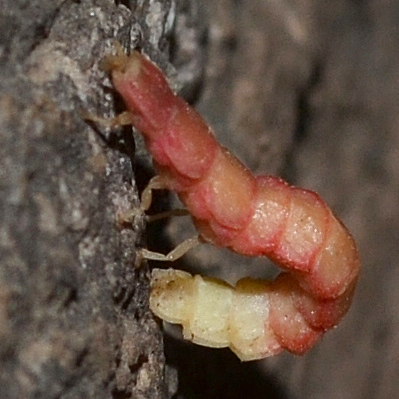Microphotus pecosensis (Rocky Mountain Pink Glow-worm)
Taxonomy
- Class: Insecta
- Order: Coleoptera
- Family: Lampyridae
- Genus: Microphotus
- Scientific Name: Microphotus pecosensis Fall, 1912
- Common Name: Rocky Mountain Pink Glow-worm
- Synonyms: Microphotus octarthrus ssp. pecosensis Fall, 1912 ()
Taxonomic Name Source
Green, J.W. 1959. Revision of the species of Microphotus, with an Emendation of the Lampyrini (Lampyridae). The Coleopterists Bulletin 13(3): 80-96.
Species Occurrence Data From: Global Biodiversity Information Facility (GBIF)
Agency Conservation Status
- SGCN
- NMDGF:
- USFWS:
- BLM:
- USFS:
- IUCN Red List: Data Deficient
- Nature Serve Global: GU
- NHNM State: SNR
- NM Endemic NO
Agency Conservation Status
| SGCN | NMDGF | USFWS | BLM Status | USFS | IUCN Red List |
Nature Serve Global |
NHNM State | NM Endemic |
|---|---|---|---|---|---|---|---|---|
| Data Deficient | GU | SNR | NO |
Description
Like other species of Microphotus, M. pecosensis males are small, fragile beetles with very large eyes and barely visible reduced mouthparts between the eyes. The antennae are shorter than the pronotum, have less than eleven segments, and have a small bead-like process, called a tuberculiform appendix, on the tip of the terminal segment. They have short, pale legs (femora do not extend beyond the margin of the body), and simple tarsal claws. Females are larviform without elytra or hindwings. They have small, elongate, retractable heads, with simple eyes, called lateral ocelli or stemmata. The antenna is similar to that of the male yet has fewer segments. In M. pecosensis specifically, the elytra in males are more than three times as long as the pronotum (average about three and a half times as long), the eyes beneath are briefly contiguous posteriorly, the antennae have eight segments, and the median longitudinal line of pronotum is not impressed. The body length is typically 6-8 mm. These characteristics are seen in M. chiricahuae as well, but the two species can be separated by features of the male genitalia. In addition, the scutellum in this species is usually narrowly rounded at the apex (Green 1959). The species are not known to be sympatric, so distribution will also be indicative.





